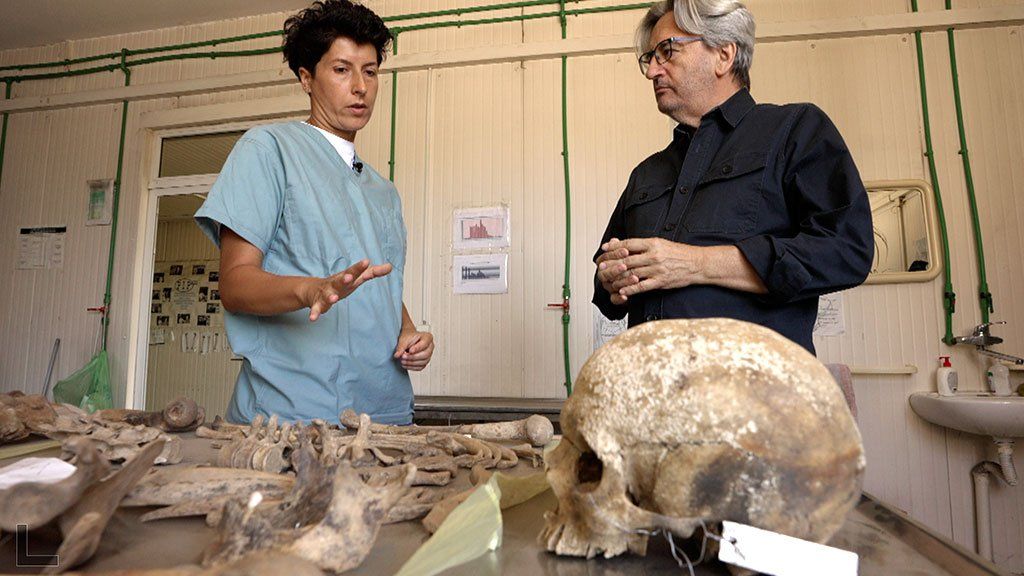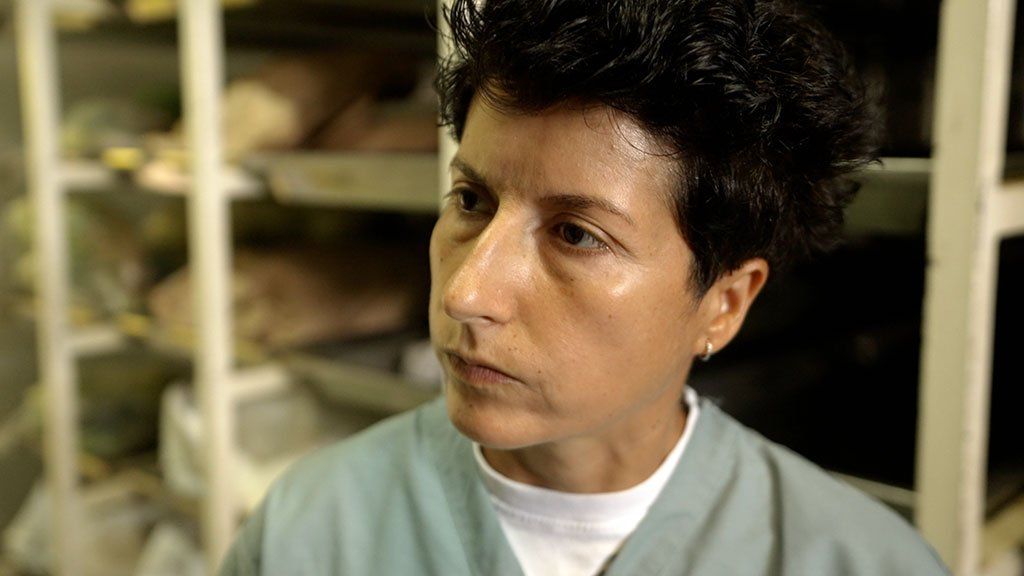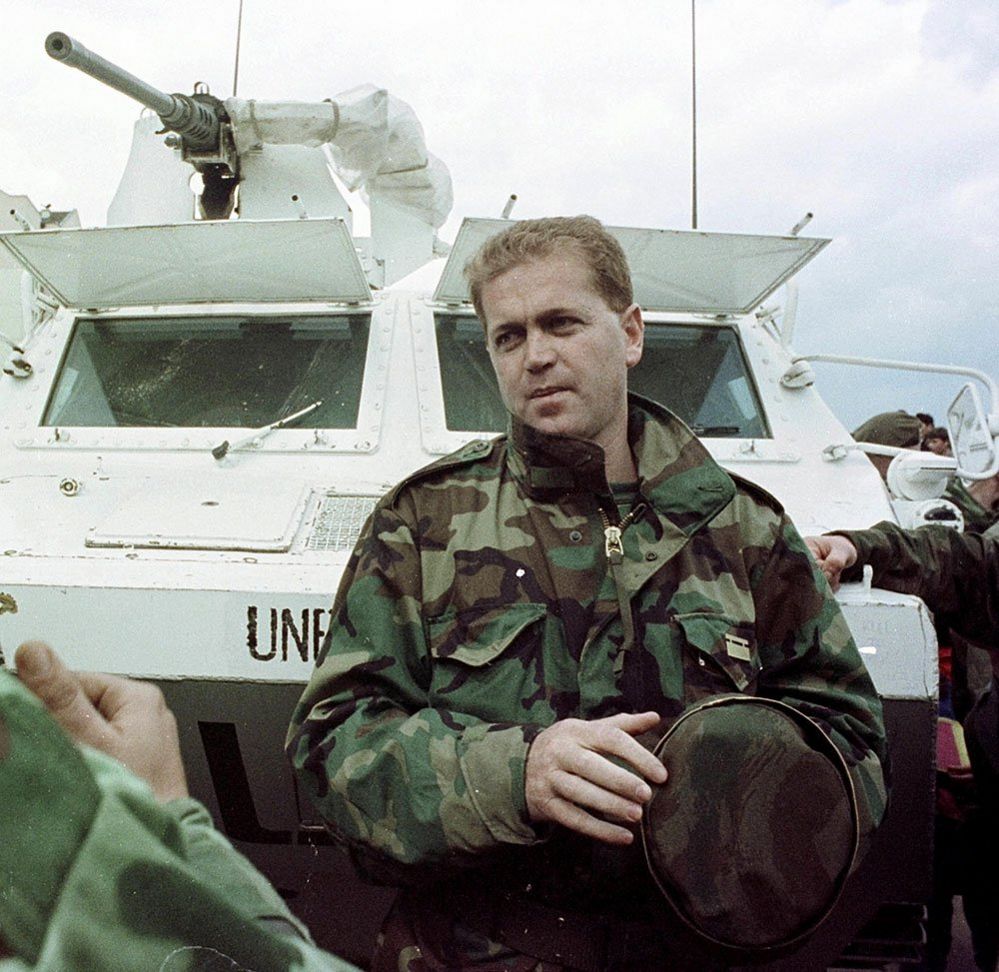“Srebrenica: The scientist determined to name the last of the dead”, BBC News
By Fergal Keane, BBC News, September 10, 2023
Dragana Vucetic was just out of college as a newly qualified forensic anthropologist when she was drawn into one of the darkest episodes of modern European history. The call came to help put names to the unidentified victims of the 1995 Srebrenica genocide during the Bosnian War.

Now, nearly 30 years after the killings, she is determined to identify the last of the dead – a task that seems all the more pertinent amid increasing Serb denial about what really happened.
https://emp.bbc.com/emp/SMPj/2.50.4/iframe.htmlMedia caption,
The gruelling task of naming the dead
Dragana is in her early 40s, a quietly-spoken figure working alone among the bones in the mortuary at Tuzla in north-eastern Bosnia. Her every gesture is measured and careful. A broken leg bone is being reassembled. The injury may have happened when the victim was murdered, or date from a time before the genocide. Slowly the evidence of the who, where and how of death will take shape. Then the family will be told.
Of the estimated 8,000 dead in the town of Srebrenica, roughly 1,000 are still awaiting identification. “A thousand families are waiting on our phone call,” she says. There is an urgency in her voice, an acute awareness of the emotional pressure on families who have spent decades hoping for news of the missing. To find a lost son, father, brother, husband is to rescue the dead from the anonymity into which the killers cast them.
“It means the families can have a funeral,” says Dragana. “There is a set of remains, and a grave where they can go to mourn.”

What happened at Srebrenica?
- The Bosnian War of 1992-95 broke out with the collapse of the former European country of Yugoslavia, when Bosnia’s Serbs launched a war to break away from the newly independent state they shared with Bosniaks [Bosnian Muslims] and Croats
- More than a million Bosniaks and Croats were driven from their homes in a Serbian “ethnic cleansing” campaign
- On 11 July 1995, the town of Srebrenica – one of six UN-declared safe havens – was captured by Bosnian Serb units led by Gen Ratko Mladic
- Bosniak women and children were driven away on buses, but more than 8,000 men and boys were taken prisoner and later shot. Lightly armed UN peacekeepers did nothing to prevent what became Europe’s worst atrocity since World War Two

The air in the warehouse is suffused with the musty smell that comes from the remains of the long-dead. To those of us who have witnessed genocide as journalists, it is a familiar, oppressive scent. It calls back memories of mass graves and the cruelty of which human beings are capable.
Dragana stays focused on the task before her. She must ensure that all of the remains are from the same person, often a challenging task when the mass graves contain hundreds of bodies thrown haphazardly together. The skeleton laid out on her laboratory table was recovered from two different graves.
“Often you had cases where bodies would be buried after the killing and then dug up and moved to a different location because the perpetrators were afraid they would be discovered,” she explains. In the process, parts of remains were left behind.
Dragana and her colleagues from the International Commission on Missing Persons (ICMP) use blood samples from living relatives to make DNA matches with the remains. Even so, there can still be confusion when several male members of the same family have been murdered – each with similar DNA. Then it can come down to relatives trying to identify the dead through clothing or personal effects found with the body.
It was a job that became Dragana’s by accident. The Bosnian War had ended and teams of scientists were being put together to try to identify the bodies from the mass graves.
“A colleague was offered one of the jobs but decided not to take it. I was asked and I said ‘yes’ the same day.” Now with 80% of Srebrenica cases resolved, Dragana works largely on her own in the mortuary.
I say I find it hard to imagine what it is like to work so closely over so many years with the evidence of such a terrible crime.
“It is my job,” she replies, “and it is a job I really want to see through to the end.”
Any emotional pressure is dealt with through physical exercise. It used to be tennis, but the colleague she played with has since moved on. Now she runs alone every day.

At weekends, Dragana drives across the border to her home town in Serbia. It was Serbia’s leader Slobodan Milosevic who gave political and military backing to the genocidal Serb leadership in Bosnia. When I ask what it is like being Serbian and working on the mass murder of Bosnian Muslims, Dragana replies that she is “an anthropologist, not a Serbian anthropologist”.
But there is clearly another imperative for Dragana. Through her work, the bones can speak. The denial of crimes can be rejected.
“It’s always surprising for my friends [in Serbia] when they hear what I do. They always ask me: ‘Is it really true what happened there in Srebrenica and those crimes?’ And they are always surprised when I explain to them what really happened. They can’t believe that they lived in the dark for the past 25 or 30 years. That is really very sad, because I think that we, as a people, are not faced with the past in a right way – that we put under the carpet a lot of things.”
Bosnian Serb leaders have long called the genocide a myth. In response, the High Representative – the UN-appointed top international official in Bosnia tasked with ensuring the different parties adhere to peace agreements – introduced a law to ban genocide denial in 2021. Bosnian Serb leaders have ignored the law, and it has led to increasingly belligerent Serb threats to secede from the state formed with Muslims and Croats at the end of the war. Serbs make up just over 30% of the population of Bosnia and control about 49% of the national territory.
To travel into the world of the Bosnian Serbs is to enter a universe of denial. At a religious festival outside the town of Sokolac, I saw T-shirts for sale praising General Ratko Mladic – commander of the army that carried out the Srebrenica massacre. A Serb father holding the hands of his two young sons told me Serbs were the endangered people in Bosnia now. His wife said she feared peace would not last.

In a nearby church I met a Bosnian Serb general who served 10 years in prison for aiding and abetting crimes against humanity at Srebrenica in 1995. General Vinko Pandurevic was condemned under the legal principle of command responsibility – for failing to stop and punish atrocities committed by his soldiers. He says there was a massacre at Srebrenica, but he won’t use the word genocide, despite the ruling of the UN court – the International Criminal Tribunal for the former Yugoslavia – that what happened indeed constituted the gravest of international crimes. I asked if he felt any personal shame about his own war crimes conviction. He insists he was not responsible for killings.

“If that was really so, of course the person would feel certain shame… I have a completely different stand.” The general’s prison sentence was reduced partly because he opened a corridor that allowed several thousand Muslims to escape.
As for the label of war criminal that will follow him all his life, he said: “I accept its existence, I live with it, but it’s not such a big obstacle to make it impossible for me to find a way to accept and live life.” Indeed he has found a new life as a sought-after pundit on Serbian television programmes discussing the war in Ukraine, and was even honoured with a decoration by the chief of staff of Serbia’s army.
But back in Tuzla, the human consequences of what happens when men like the general fail in their duty lie stacked in white bags on steel shelves in the mortuary. Above them are brown paper bags containing clothing and personal effects. Dragana Vucetic will keep working to try to ensure every set of these remains is given the dignity of a name.